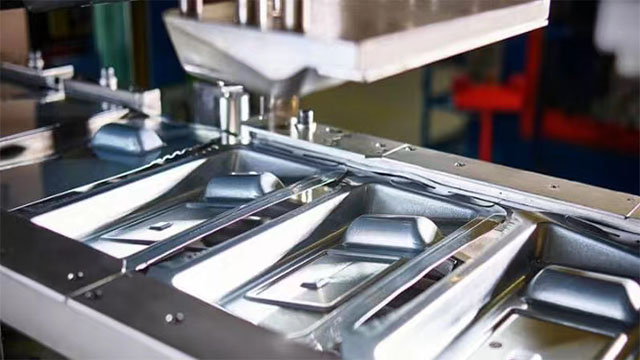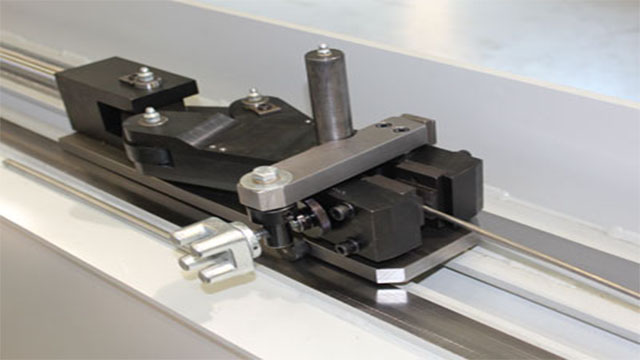BETTER TOUCH BETTER BUSINESS
Contact Sales at Lori.
Aluminum alloy machining process refers to the use of a series of mechanical and chemical methods to shape metal materials into parts or components with a certain shape, size and functional requirements. Aluminum alloy is a very common material, with the advantages of light weight, high strength, corrosion resistance and wear resistance. Aluminum alloy machining technology is essential.
Today, I will introduce the commonly used aluminum alloy machining technologies.
Laser cutting
The high power density laser beam is used to irradiate the materials to be cut, so that the materials are quickly heated to the vaporization temperature, evaporating to form a hole, with the beam moving on the material, the hole continuously forms a very narrow width (such as about 0.1mm) slit, to complete the cutting of the materials.
Benefits:
1. Stress-free cutting: laser cutting machine does not need other tools to process metal. It can remove microscopic cracks and stress marks, as it can weaken a sheet metal.
2. Very tight cutting: because laser cutting is stress-free, the metal shape can be cut very tightly. It becomes practical to create metal cuts and form more metal shapes from a sheet of paper.
3. Smooth cutting edge: laser can cut sheet metal forms that leave a smooth and shiny surface. It reduces the risk of leaving a sharp or burr.
4. Minimum tool wear: the laser cutting machine has no physical contact with the workpieces. Compared with bending equipment or bending machines, it has less wear on laser cutting machines. The service life of the laser cutting machine is extended and maintenance costs are reduced.
5. Reduce the need for secondary operations: due to its smooth cutting, reduce the need to remove sharp and burr secondary operations. It increases the speed of manufacturing. You can make more parts in one day.
Bend
Under the pressure of the bending machine die or the lower die, the metal sheet first passes through elastic deformation, and then enters plastic deformation. In the beginning stage of plastic bending, the sheet is free to bend. With the pressure of the upper die or the lower die on the plate, the plate and the inner surface of the V-groove of the lower die are gradually close, and the curvature radius and bending torque arm are gradually smaller. And the pressure is continued until the stroke is terminated, so that the upper and lower die are in full contact with the three points of the plate. At this time, a V-shaped bending is completed.
Benefits:
1. Improve the flexibility of materials and increase the scope of applications of materials.
2. Meet the needs of different shapes and sizes and make manufacturing costs more affordable.

Stamping
Stamping is a forming processing method that relies on press and die to apply external force to plate, strip, pipe and profile to produce plastic deformations or separations, so as to obtain the required shape and size of the workpiece (stamping part).
Benefits:
1. Simple operations, easy to organize production. Under the condition of mass production, the cost of stamping parts is low. Stamping can obtain parts with high strength, high stiffness and light weight at little cost.
2. In the press simple stamping, you can obtain a variety of complex shapes of parts and products that are difficult to process with other machining technologies.
3. Stamping parts generally do not need to do further mechanical machining. It has high dimensional accuracy. The dimensional accuracy can also be improved if certain special measures are taken. Since most stamping parts are made of sheet metals, their surface qualities are better, which provides convenient conditions for subsequent surface treatment processes (such as electroplating, painting, etc.).
4. Good interchangeability. Stamping machining stability is good, the same batch of stamping parts, can be exchanged with each other, does not affect the assembly and product performances.
CNC
Use the automatic control system to install digital program flow commands to control the automatic start and stop of CNC machine tool bearings, reversing and shifting, etc. You can select CNC blades and change the cutting amount and walking path according to the CNC blades to complete various auxiliary actions required in the lifetime machining.
Benefits:
1. Reduce the total number of tooling in large quantities, the production of machining styles of complex parts, only need to change the machining process.
2. The machining is relatively stable, will not let the artificial machining deviation, resulting in each aluminum alloy is not the same, and even defective products.
3. Workers can produce complex aluminum parts, and even can produce machining parts. It can also produce multiple varieties, high production efficiency, save labor costs, and can achieve multiple production at the same time.

Wire-drawing
Surface drawing treatment is a surface treatment method that forms lines on the surface of the workpieces by grinding the product to play a decorative effect. Because the surface drawing treatments can reflect the texture of metal materials, it has been loved by more and more users and more and more widely used.
Benefits:
1. Strong metal feeling: the anodized aluminum wire drawing metal surface hardness, good scratch resistance, surface without paint cover, retain the original metal color of metal wire drawing, highlighting the modern metal sense, improve the grade and added value of metal wire drawing products.
2. Good processability: the decoration of wire drawing is strong, and its hardness is moderate, can be easily bent forming. Related enterprises will draw the metal wire continuous high-speed stamping, directly processed into products, no need to carry out complex surface treatments, greatly reducing the production cycle and reduce the cost of production.
3. Good weather resistance: metal drawing process in indoor use for a long time does not change color, no corrosion, no oxidation, no rust. Metal drawing process can also be used outdoors, long-term exposure to sunlight will not change color.
Anodizing
Electrochemical oxidation of metals or alloys. Aluminum and its alloy in the corresponding electrolyte and specific process conditions, due to the action of external current, the process of forming an oxide film on the aluminum product (anode).
Benefits:
1. Increase the beauty: the oxide film on the surface of aluminum can change the appearance color and gloss of aluminum to a certain extent, thereby increasing the beauty and decorative effect of aluminum.
2. Increase insulation: the oxide film has certain insulation properties, which can effectively prevent the electrochemical reaction when aluminum is in contact with other metal materials or electrolytes, so as to improve the safety of aluminum.
3. Anti-corrosion: the oxide film on the surface of aluminum can improve the corrosion resistance of aluminum to a certain extent. Oxide film is a kind of oxide layer with good sealing, which can effectively isolate the erosion of external oxygen and water, thus extending the service life of aluminum.
4. Increase the hardness: after anodizing aluminum, the hardness of the oxide film is generally between 200-500HV, much higher than the untreated aluminum. The increase in hardness can effectively improve the wear resistance and scratch resistance of aluminum.
Copyright © 2025 Shenzhen Lori Technology Co.Ltd. | All Rights Reserved.